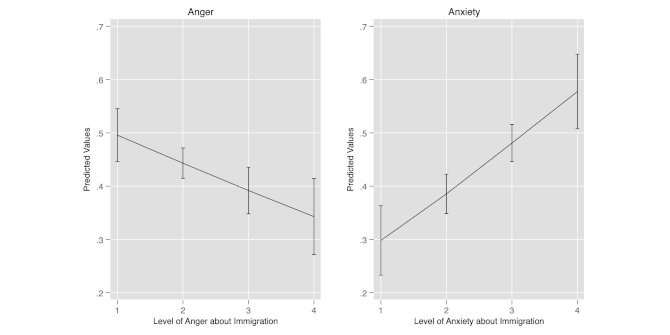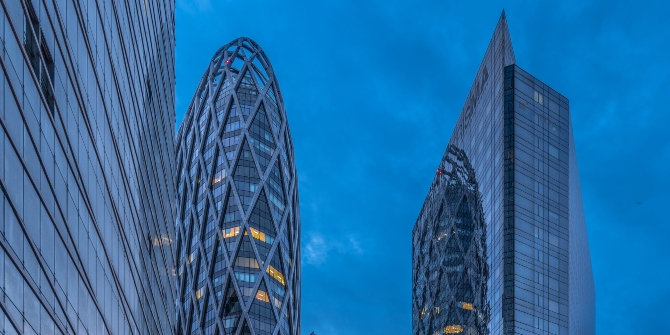Many international agreements made by the European Union establish new institutional mechanisms such as committees and working groups. Drawing on new research, Andreas Dür and Markus Gastinger explain how these ‘joint bodies’ help facilitate cooperation between the EU and third countries, and what they mean for the balance of power between the EU’s institutions.
When the European Union and the United Kingdom negotiated the EU-UK Trade and Cooperation Agreement, they provided for the creation of several institutional mechanisms to compensate for the loss of opportunities for institutionalised interactions resulting from the UK’s decision to leave the EU.
Not only did the EU and UK set up a Partnership Council, they also established no fewer than 20 specialised committees and working groups dealing with issues as varied as air transport, customs cooperation, law enforcement and judicial cooperation. Still, such elaborate governance structures set up in an international agreement of the EU are far from limited to the UK. For example, the EU-Canada Comprehensive Economic and Trade Agreement (CETA) disposes of its of own Joint Committee, meeting at ministerial level, and several more technical sub-committees dealing with several key areas for EU-Canada relations.
These are just two examples of what we collectively refer to as ‘joint bodies’. The specific designation of such bodies varies as they can have names such as association council/committees, cooperation councils/committees or even just joint committees/commissions. Still, they always institutionalise regular interactions between official representatives of the EU and the third party to implement international agreements.
Joint bodies and EU external relations
In a recent study, we show that the EU has set up such joint bodies in about 300 agreements since 1992 but their ‘institutional design’ is far from uniform. They can meet among ministers or low-ranking officials, more or less frequently, or take more or fewer decisions, such as autonomously setting up additional sub-committees not originally included in the agreement or even changing parts of the agreement itself.
The result is a ‘web’ of varying institutional relations with countries across the world, depending on how ‘strong’ the joint bodies included in their agreements with the EU are. Judging from the original data gathered for our study, the EU tends to establish stronger joint bodies with (a) bigger countries where actions taken in joint bodies promise to have a greater impact; (b) countries that are more interdependent with the EU because they are closer to Brussels; and (c) international agreements with a broader scope which can operate more efficiently by crafting package deals moving implementation forward.
This strategically maximises the benefits the EU derives from its (ultimately limited) bureaucratic resources. Again, the UK is a good illustration of this relationship, since it is a fairly large country next to the EU where a strong institutional framework spells considerable benefits for both sides nested within a fairly broad agreement.
The influence of the Commission
In another study, we cover a further interesting dynamic connected to joint bodies included in EU agreements – their impact on the institutional balance of power among EU institutions. With the European Parliament playing only a minor role in the implementation of international agreements, the main beneficiary of stronger joint bodies is the European Commission. In fact, EU member states in the Council frequently bestow considerable powers on the Commission when establishing joint bodies with third countries.
For example, member states may leave it to the Commission to represent the EU during meetings. They may even refrain from physically being in the room. When preparing for meetings in these joint bodies, which are effectively international negotiations between the EU and a third country, EU member states may make it easier for the Commission to define the EU position by only requiring the Commission to find qualified majority support in the Council.
Drawing on a principal-agent framework, we again show with original empirical data that the European Commission enjoys more discretion in joint bodies when agreements are complex to implement, when agreements can be ratified with only qualified majority support in the Council (rather than requiring unanimity), and when EU member states have different policy positions on what the agreement (and its implementation) should look like.
We have also assessed what the creation of the High Representative of the Union for Foreign Affairs and Security Policy, who is also European Commission Vice President, means for joint bodies in the EU. We argue that this comparatively new institutional development can only increase the European Commission’s standing in joint bodies, thereby further increasing its influence over EU external relations going forward.
A key institutional alternative
Our two studies cover important new ground for the study of joint bodies in the EU. Given the number and scope of EU international agreements, the European Commission’s ability to shape these agreements’ implementation bestows on it considerable opportunities to define EU external relations.
Joint bodies are certainly no panacea and even the strongest bodies cannot ensure that international cooperation between the EU and third countries proceeds effectively and smoothly. Still, at a time when international organisations such as the World Trade Organization (WTO) are coming under increasing pressure and the international legal order is under unprecedented attack, joint bodies form a key institutional alternative for the EU to promote its more rule-based vision of international cooperation – just like EU member states like to structure their own cooperation within the EU institutions themselves.
For more information, see the authors’ accompanying papers in the Journal of European Public Policy and European Union Politics.
Note: This article gives the views of the authors, not the position of EUROPP – European Politics and Policy or the London School of Economics. The project has received funding from the European Union’s Horizon 2020 research and innovation programme under the Marie Skłodowska-Curie grant agreement No 840135. Andreas Dür also acknowledges funding from the European Research Council under the European Union’s Horizon 2020 research and innovation programme (grant agreement No 724107). Featured image credit: © European Union, 2021





